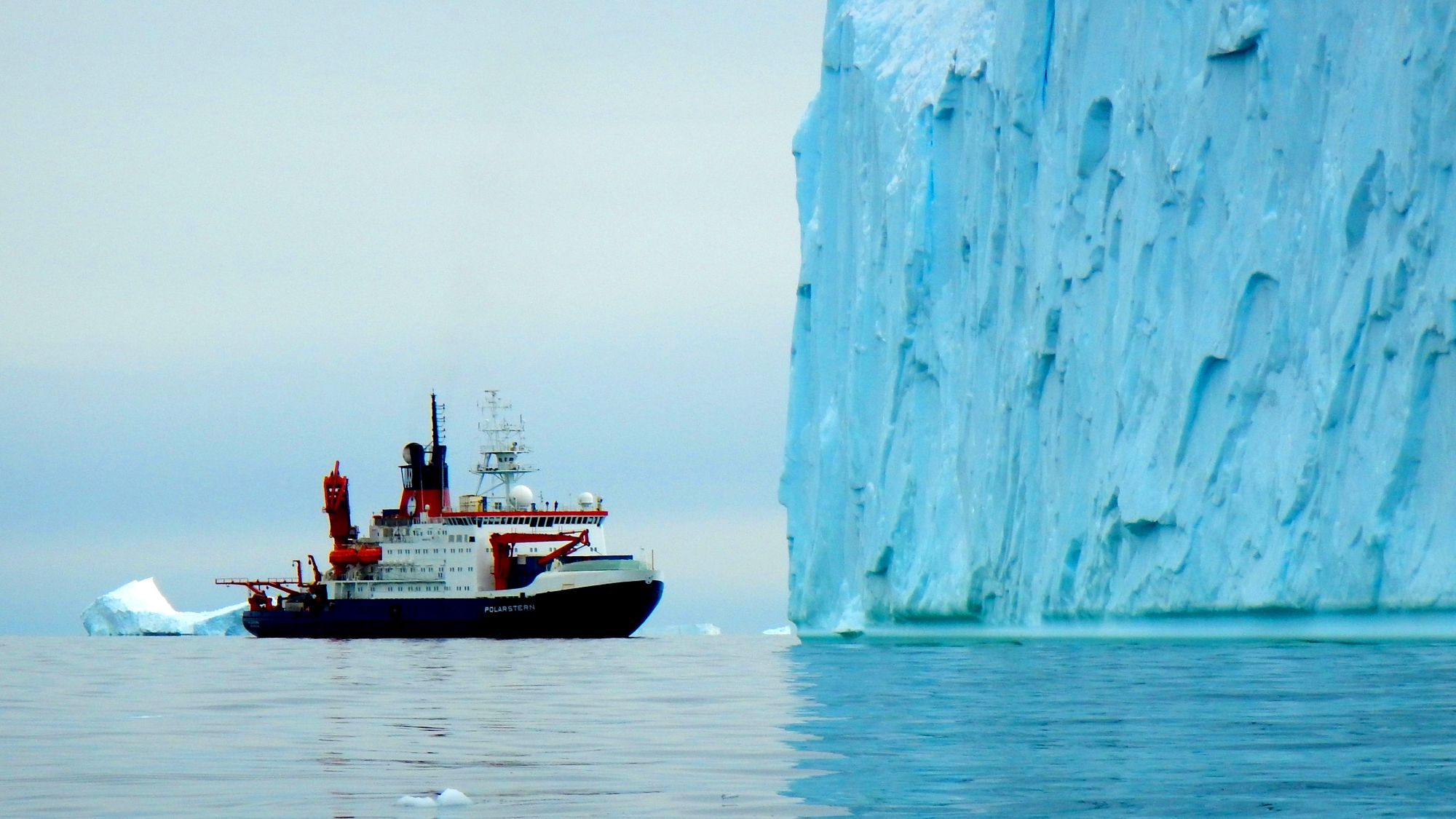
©Alfred-Wegener-Institut / Johann Klages
Not Actually Eternal – Antarctic Ice Research
New Insights into the Origin of the Antarctic Ice Sheet
An international team led by U Bremen Research Alliance researchers made a surprising discovery using a unique drill core and elaborate modeling methods. In the fight against climate change, this is not good news.
To the inexperienced eye, the drill core that Dr. Johann Klages shows in a lab at the Alfred Wegener-Institute, Helmholtz Centre for Polar and Marine Research (AWI) looks like an oversized coil of clay for children to play with. Nothing about this dark, solid, finely grained, smooth-surfaced sample gives away the fact that it is 33.8 million years old and a unique testament of our climate history.
Klages, however, immediately recognized that he had found something special when the sediment was brought to the surface from the 850-meter-depths of the Amundsen Sea. “The color indicated that this was organic material,” the sedimentologist explains. But where would these plant remnants come from in the icy desert of Antarctica? The drill core, obtained during a 2017 expedition to West Antarctica with the Polarstern research vessel, turns previous discoveries about the dawn of the icy continent’s glaciation upside down. Until this discovery, researchers assumed that the Antarctic Ice Sheet was formed from the center outward around 34 million years ago, during a time of fundamental climate shifts that influence the global climate to this day. If this were the case, the sediment would have been coarser, and there would have been no traces of pollen or spores.
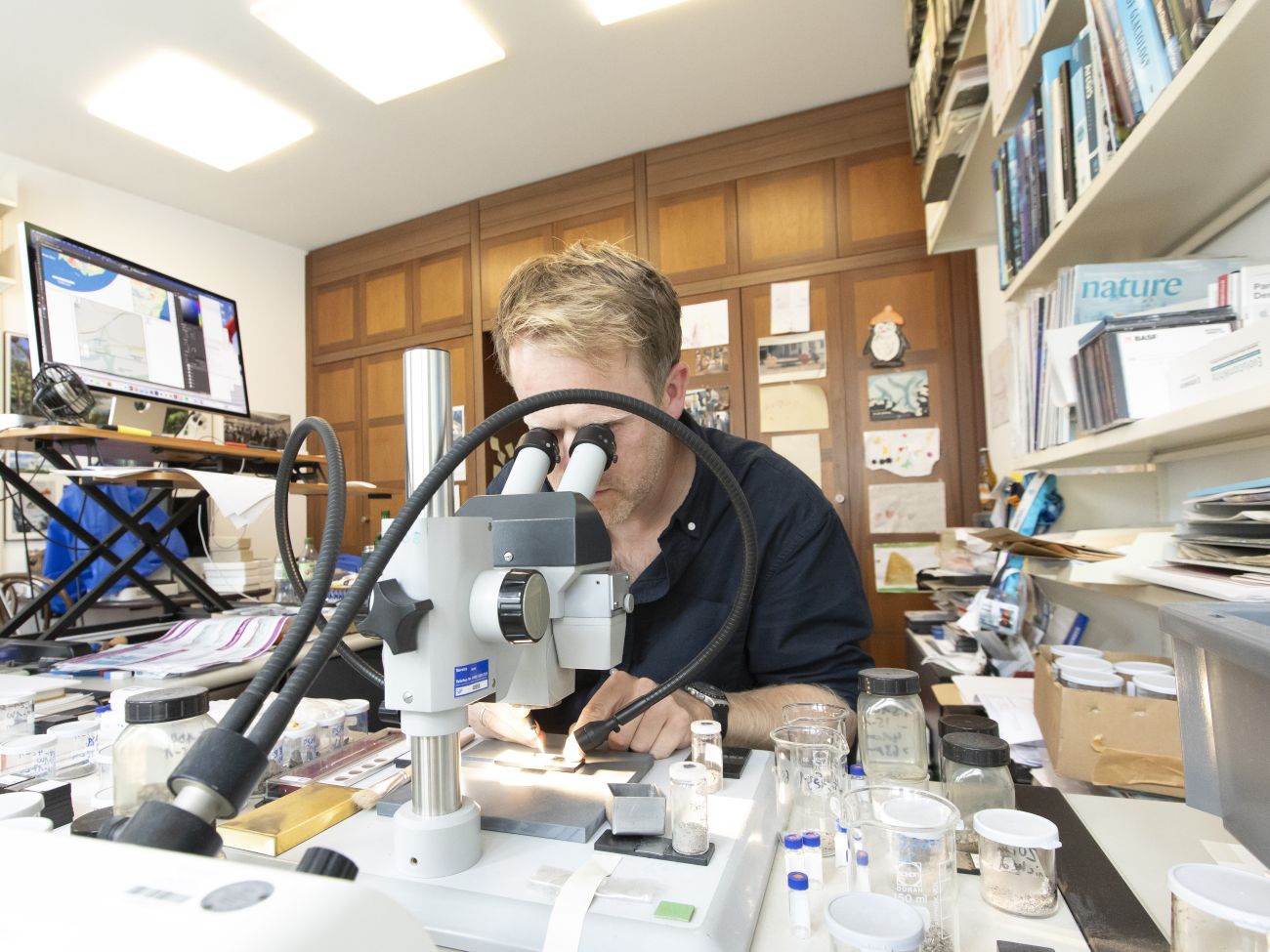
©Jens Lehmkühler / U Bremen Research Alliance
Based on the analysis of the sediment core, an international team of researchers began a climate reconstruction, which according to Klages, is the only one of its kind worldwide. The researchers supplemented their model with data about climate conditions, water and air temperatures, the presence of ice, and precipitation and refined it. The result, which is described in a recent study published in the prestigious journal Science, is clear. Glaciation initially began in the mountainous coastal regions of East Antarctica, then spread to the hinterlands, and slowly to West Antarctica – over a span of about seven million years.
“Even a minimal rise in temperatures is sufficient to melt the ice. That is a cause for concern.”Dr. Johann Klages
“Although East Antarctica was covered in ice, beech trees were still growing in the west and the average annual temperature was five or six degrees Celsius,” says Klages. Above all, the analyses show that the ice sheet in West Antarctica not only formed much later, but is also much more susceptible to the effects of outside influences and climate change. “Even a minimal rise in temperatures is sufficient to melt the ice,” the researcher emphasizes. “That is a cause for concern.”
The largest contiguous ice mass on Earth is about one and a half times the size of Europe. The Antarctic Ice Sheet is up to 4.5 kilometers thick, and cools the water masses of the oceans like a giant refrigerator. It also influences currents, water temperatures, and winds, thereby controlling the Earth’s climate while simultaneously being very vulnerable to environmental change.
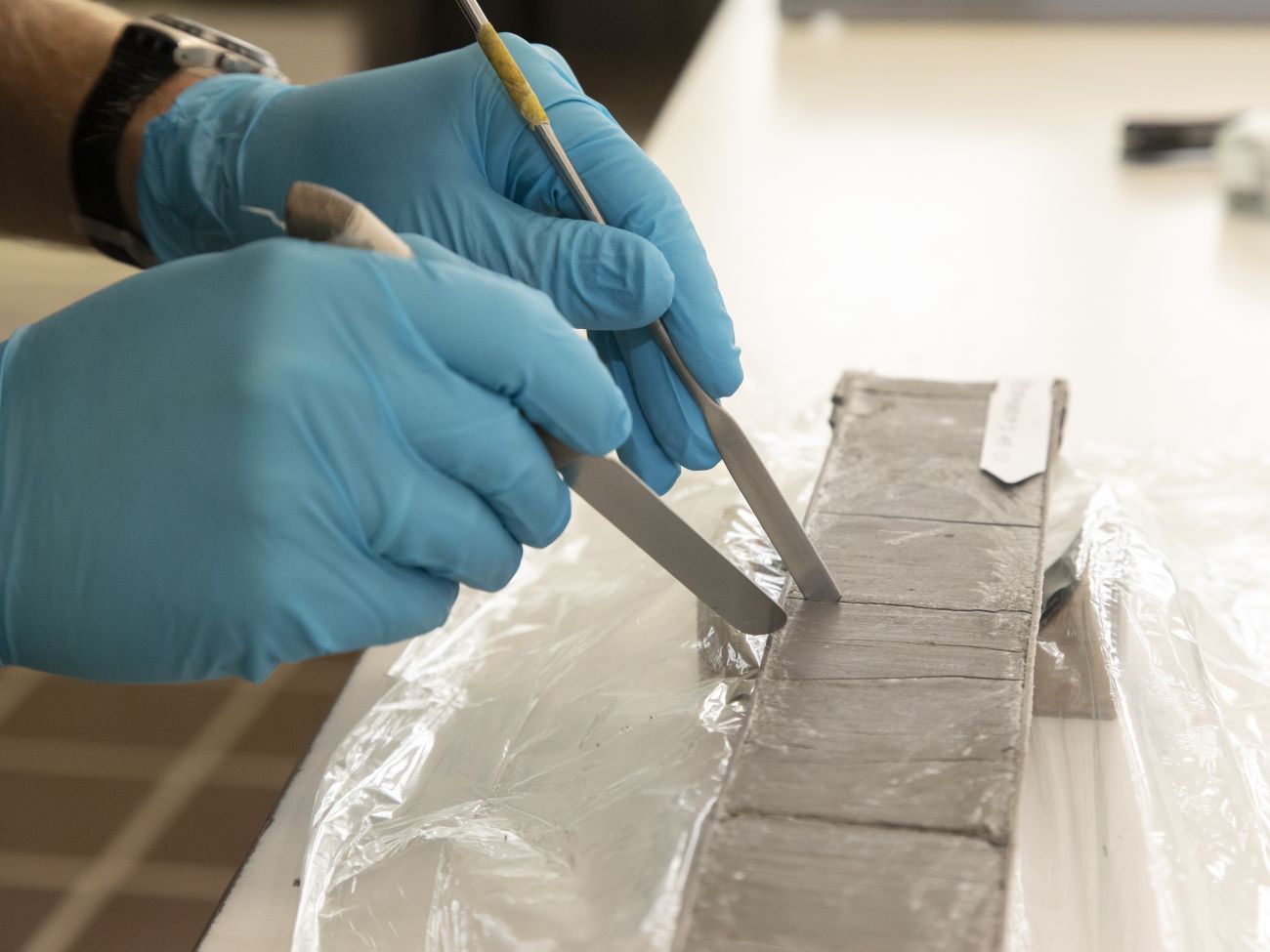
©Jens Lehmkühler / U Bremen Research Alliance
This is especially true in West Antarctica. While 85 percent of East Antarctica’s ice sheet is above sea level, the opposite is true in the west. Extremely salty and increasingly warmer ocean waters are hollowing out the ice. As a result, huge tabular icebergs are breaking off in West Antarctica, and the eternal ice continues to melt and recede. “This sets in motion a self-perpetuating process that many believe is unstoppable,” says Klages.
If the glaciers around the Amundsen Sea from which the researchers obtained the drill core were to melt, global sea levels would rise by one and a half meters. “If the entire West Antarctic Ice Sheet breaks off, this increase would be three and a half to five meters,” stresses Klages, emphasizing the short time period in which these changes have occurred.
“Our focus is on protecting humans. The Earth really does not care what we do here.”Dr. Johann Klages
All of this has happened in the last 150 years, which is hardly more than the blink of an eye in the Earth’s history. A century and a half is roughly equivalent to the time in which humanity has been extracting and processing fossil fuels from the Earth’s crust that had been deposited there over millions of years. “This is happening in an unprecedented way and at an unprecedented rate. We have begun an enormous experiment with an uncertain outcome,” says Klages. No one knows what this will do to our climate or to us, and what this will mean for our future. “Our focus is on protecting humans. The Earth really does not care what we do here.”
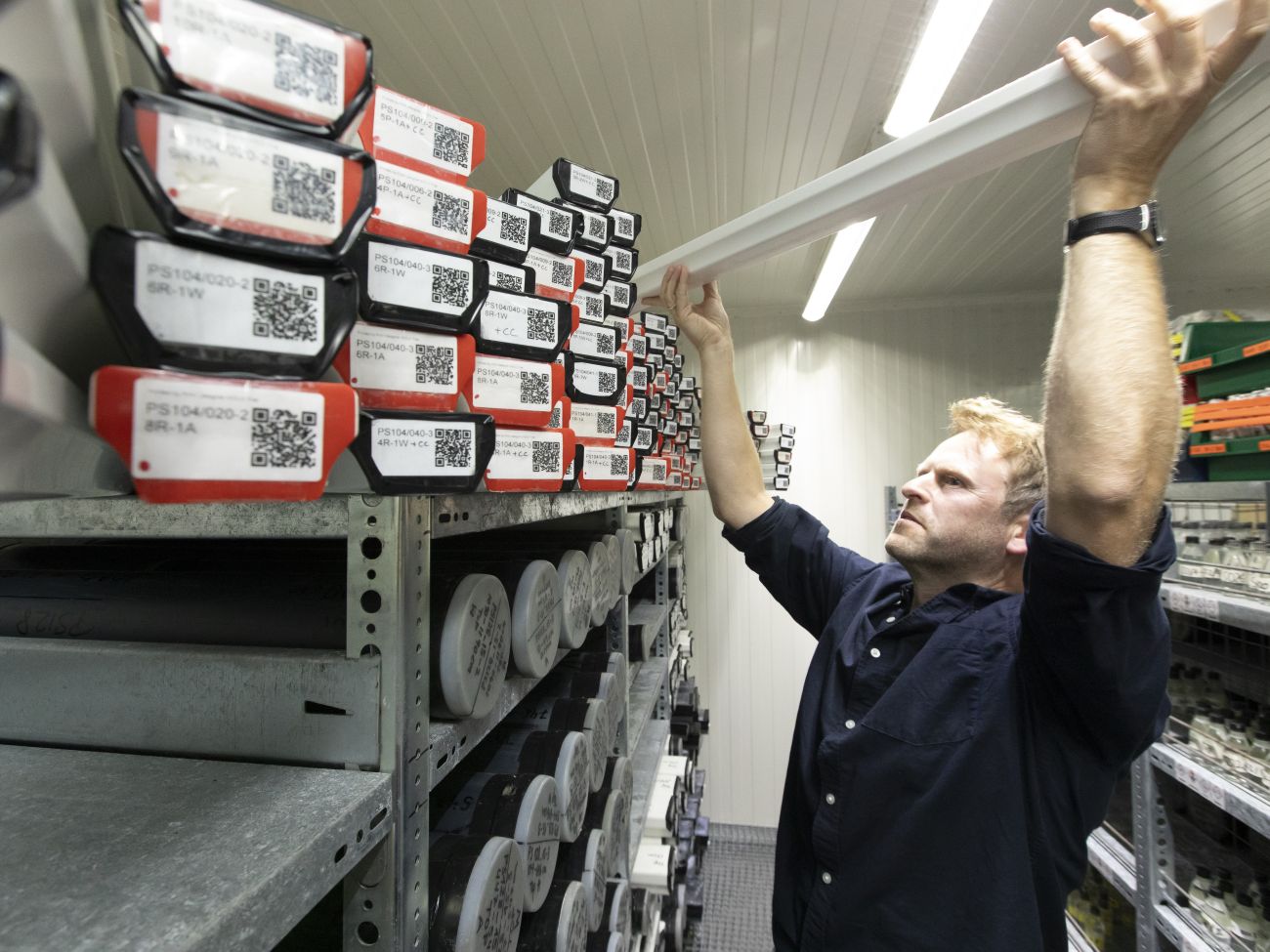
©Jens Lehmkühler / U Bremen Research Alliance
Prof. Dr. Heiko Pälike and Dr. Torsten Bickert from the University of Bremen’s MARUM – Center for Marine Environmental Sciences share this view. The paleo-oceanographer and the geoscientist were part of the expedition team and coauthors of the scientific study, as was their colleague Dr. Jürgen Titschack. They first scanned the six-centimeter diameter core using computed tomography in the Bremen-Mitte hospital, which is a partner of the institute, to get a complete and unobstructed view of important components such as root remnants before later cutting the core lengthwise.
One half of the core was then sampled and the other half archived. Both are stored at four degrees Celsius. “Sediment cores are invaluable. These can be analyzed decades later and could possibly produce even more sophisticated results with newer methods,” says Brickert.
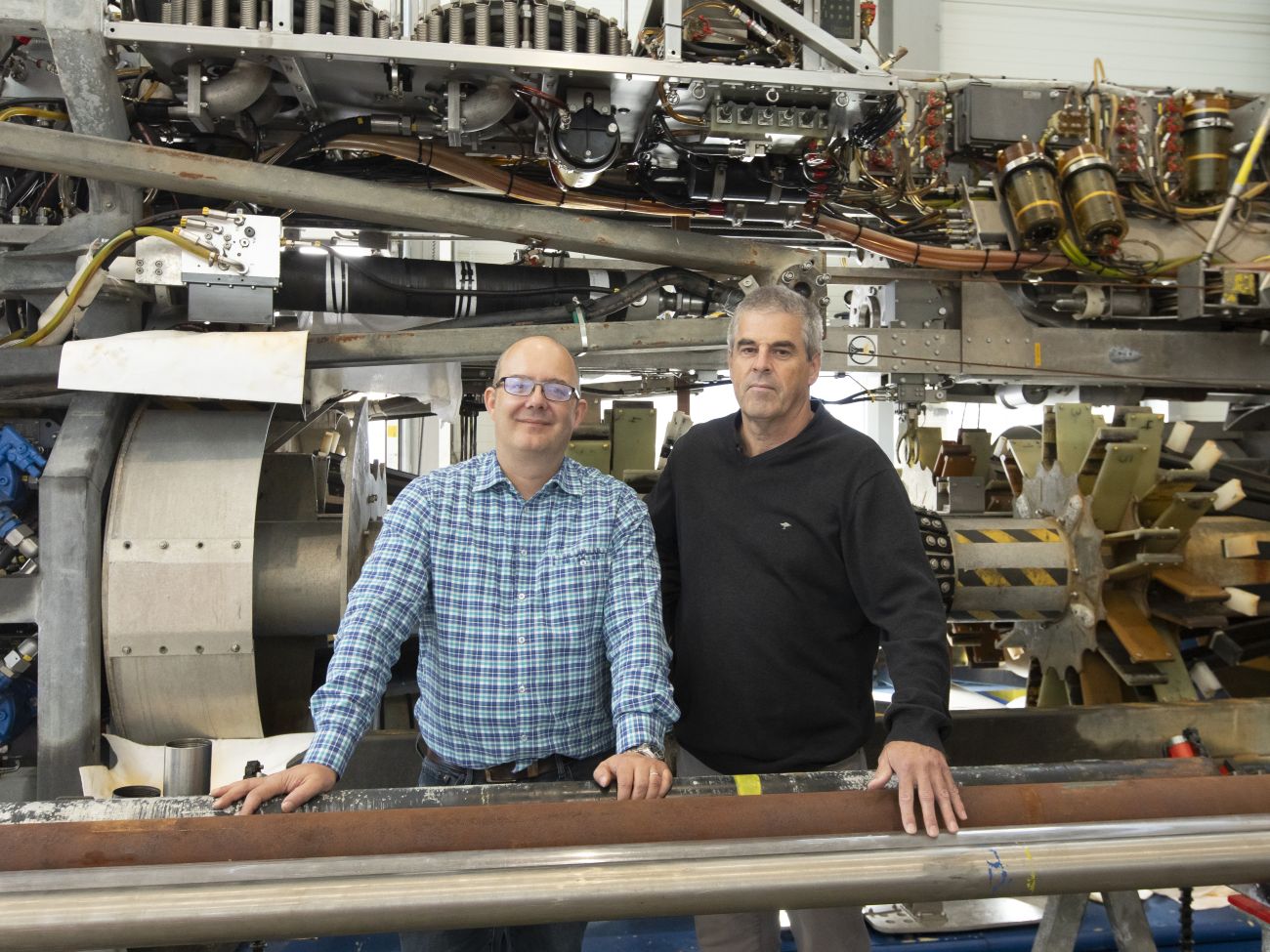
©Jens Lehmkühler / U Bremen Research Alliance
The innovative approach that enabled the drill core retrieval is the MeBo70 seabed drill rig, which was used for the first time during the Polarstern’s expedition to Antarctica. It was developed by the University of Bremen’s MARUM, which, like AWI, is part of the U Bremen Research Alliance. Without its rotating cutterhead, drilling into the hard and heavily compressed soil in this region and bringing five sediment cores with a total length of ten meters to the water’s surface at the drilling site would not have been possible.
“The research environment in Bremen is unique, and not just from a technical point of view. Our alliance covers many areas of expertise. I honestly cannot imagine better working conditions. Everyone works with great motivation and conviction.”Dr. Johann Klages
For the sedimentologist Klages, MARUM’s MeBo70 is a good example of how the individual members of the U Bremen Research Alliance complement and strengthen each other’s work. “The research environment in Bremen is unique, and not just from a technical point of view. Our alliance covers many areas of expertise. I honestly cannot imagine better working conditions. Everyone works with great motivation and conviction.”
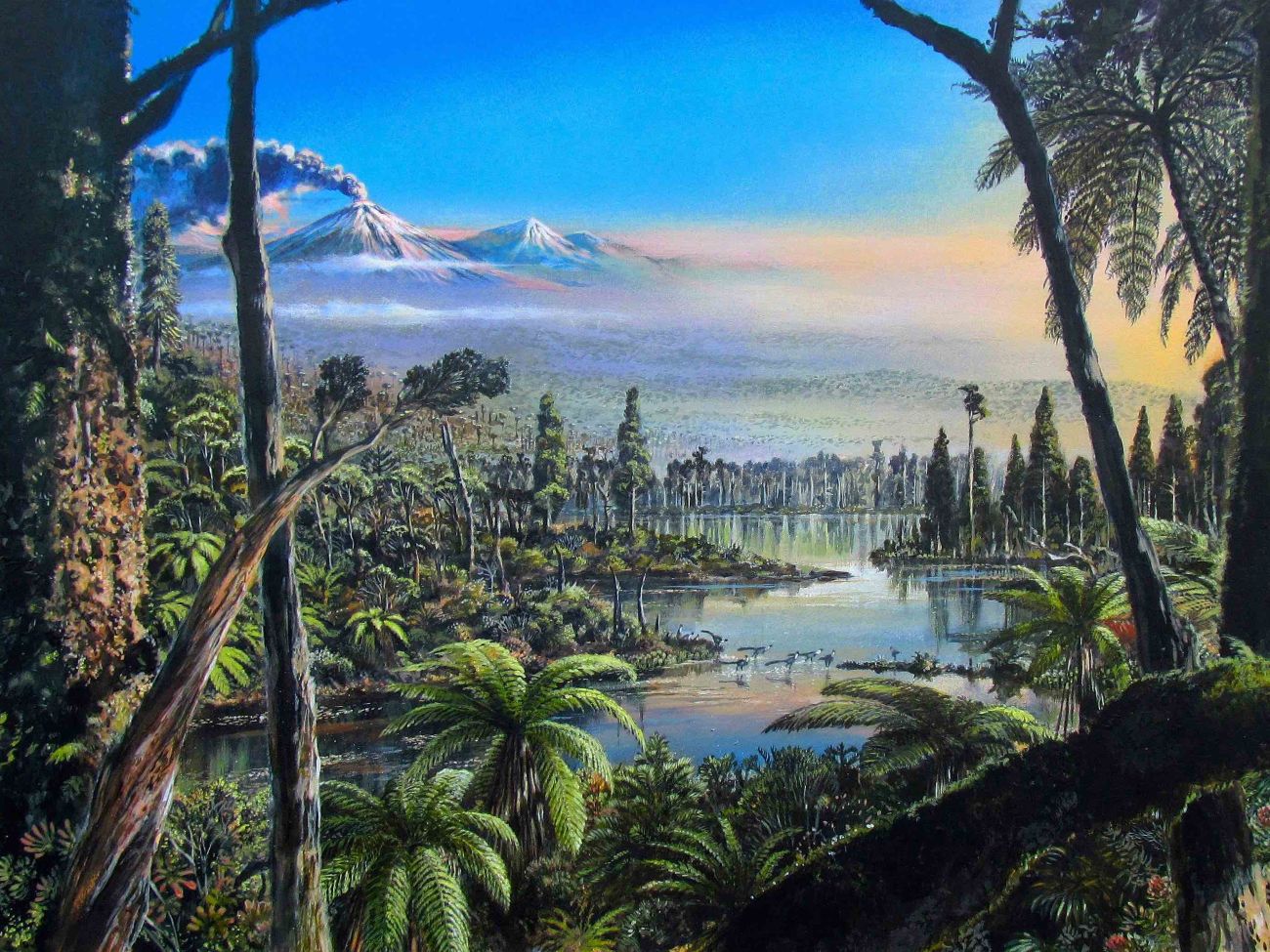
© J. McKay
The 42-year-old father of two has been to Antarctica five times. Its untouched nature, the vastness, the light, and the ice fascinate him. “It is awe-inspiring,” he says. This continent not only has the least human influence; it is also one of the largest blank spots on the map in terms of research. He will presumably return to the region in 2027 with the Polarstern and the MeBo70. Pälike and Bickert will likely join him again.
One goal of the next expedition is to use drill cores to analyze other time periods with similar carbon dioxide concentrations to those expected in the future. “All the data we can produce is extremely important in improving the climate models being developed at AWI in the paleo-climate modeling group of Gerrit Lohmann,” Klages emphasizes. How stable was Antarctica back then? When does the tipping point begin as of when the melting of the ice can no longer be stopped?” We want more precise answers.”
Publication “West Antarctica during peak early Oligocene glaciation” in SCIENCE
Green Antarctica
A swampy rainforest in which dinosaurs roam is a previously unknown view of the icy continent. This depiction of West Antarctica in the Cretaceous Period, some 90 million years ago, graced the cover of the journal Nature and has made its way around the world. It is a visual representation of the analysis of drill core components recovered by researchers from the U Bremen Research Alliance in the Amundsen Sea. Their research also illustrated the enormous power of the greenhouse gas carbon dioxide. Although sunlight was absent for four months, the average annual temperature was twelve degrees Celsius due to an extremely high atmospheric concentration of carbon dioxide.
This article comes from Impact – The U Bremen Research Alliance science magazine
The University of Bremen and twelve non-university research institutes financed by the federal government cooperate within the U Bremen Research Alliance. Their joint work spans across four high-profile areas and thus from “the deep sea into space.” Biannually, Impact science magazine (in German) provides an exciting insight into the effects of cooperative research in Bremen.